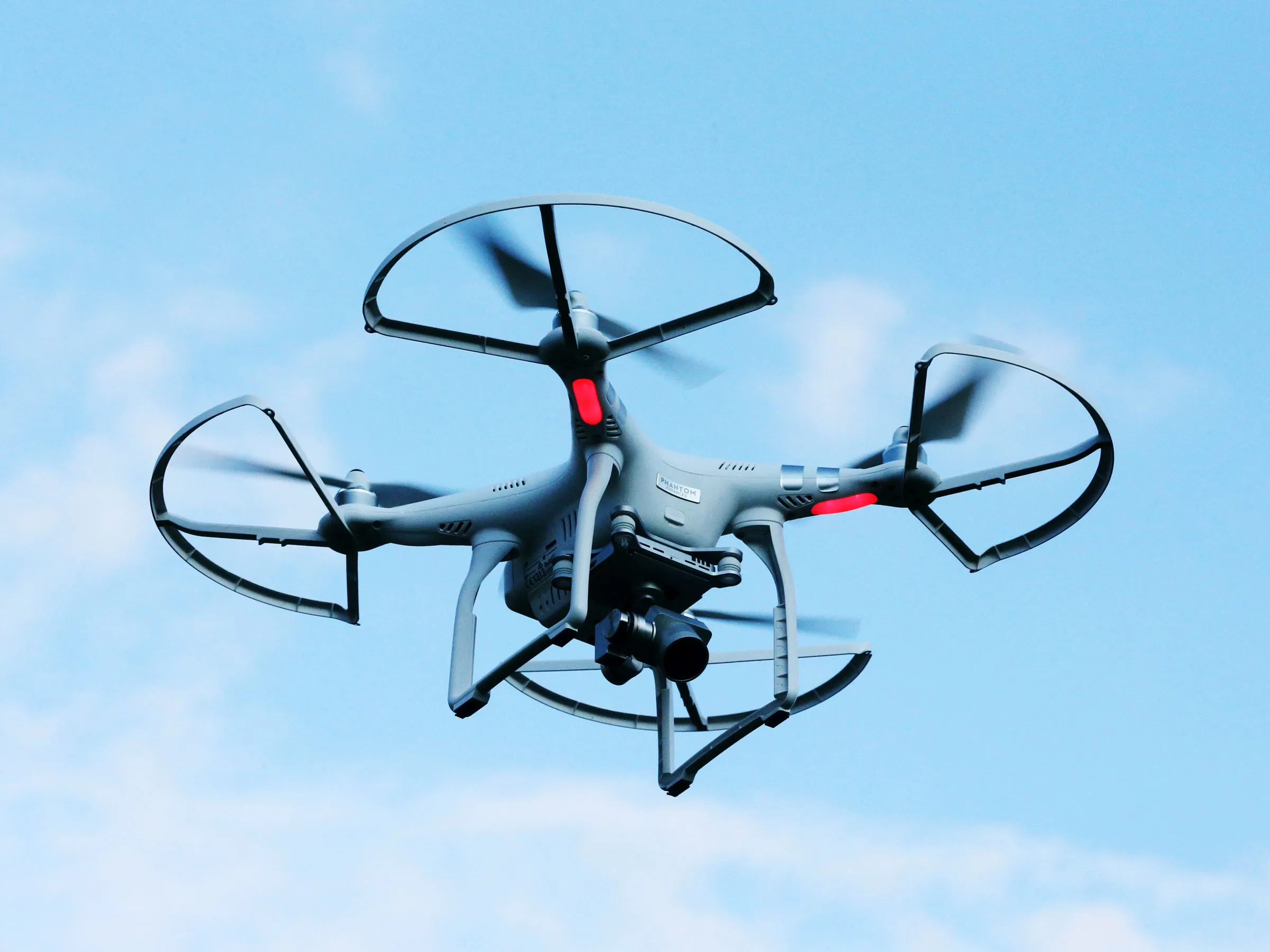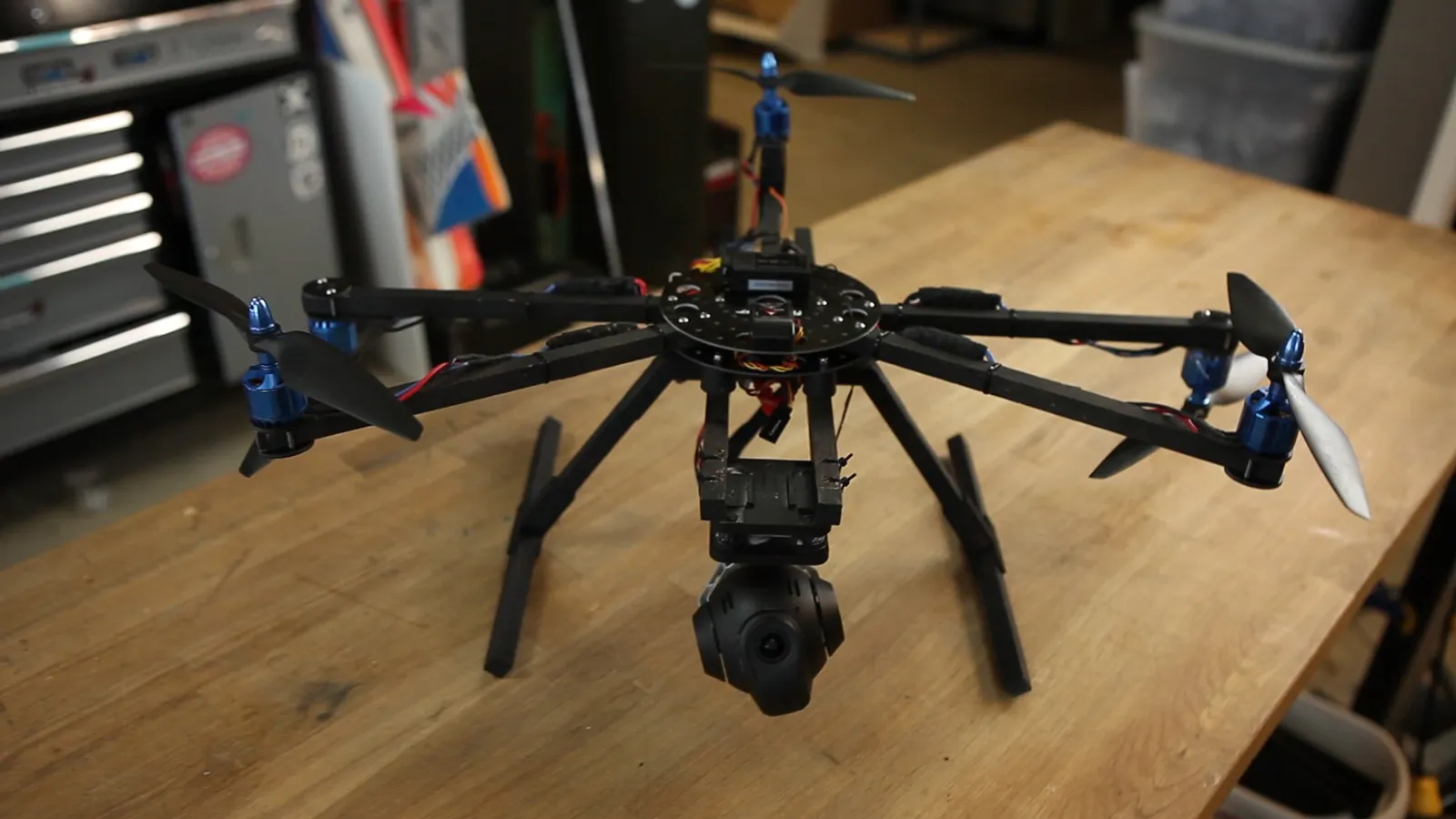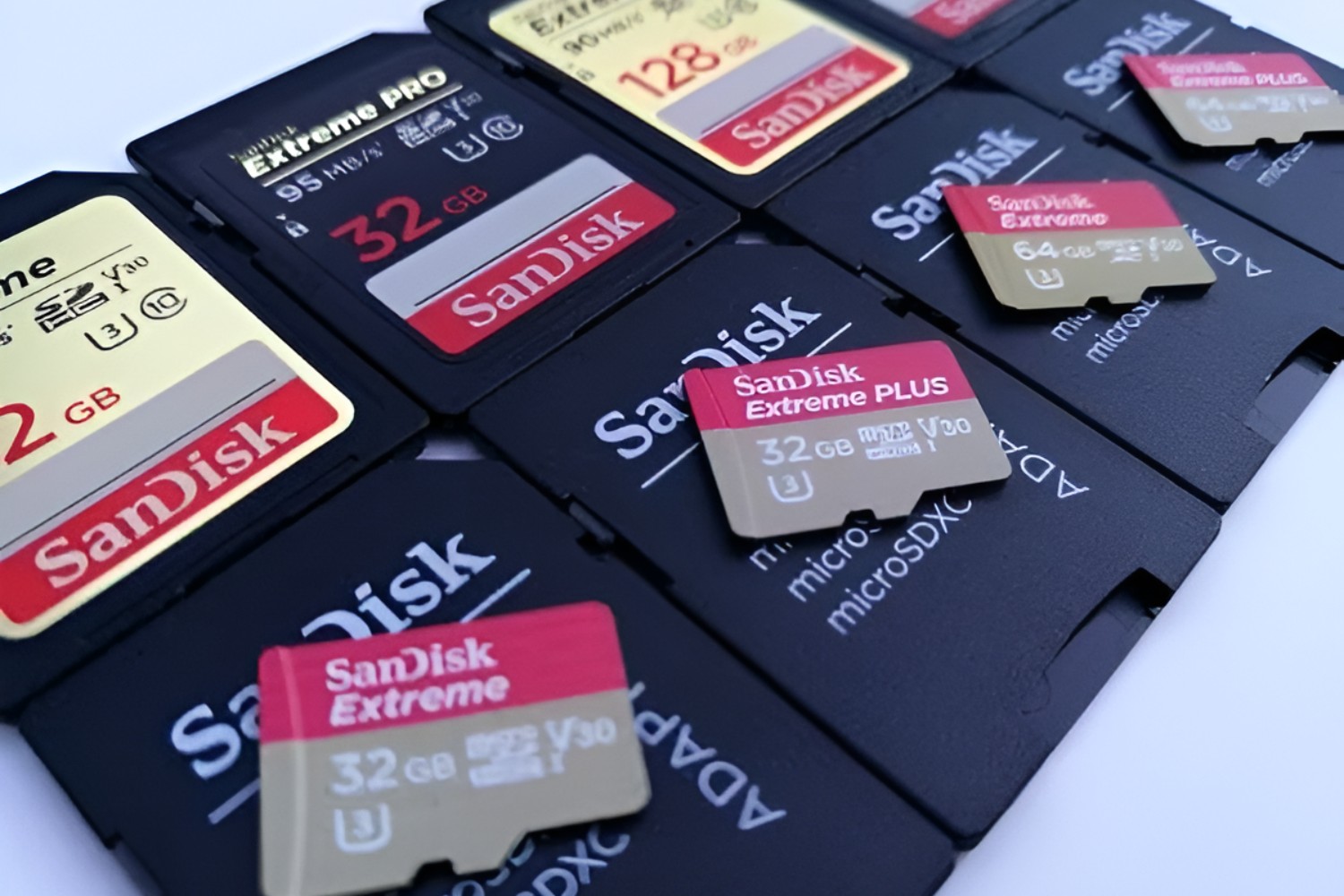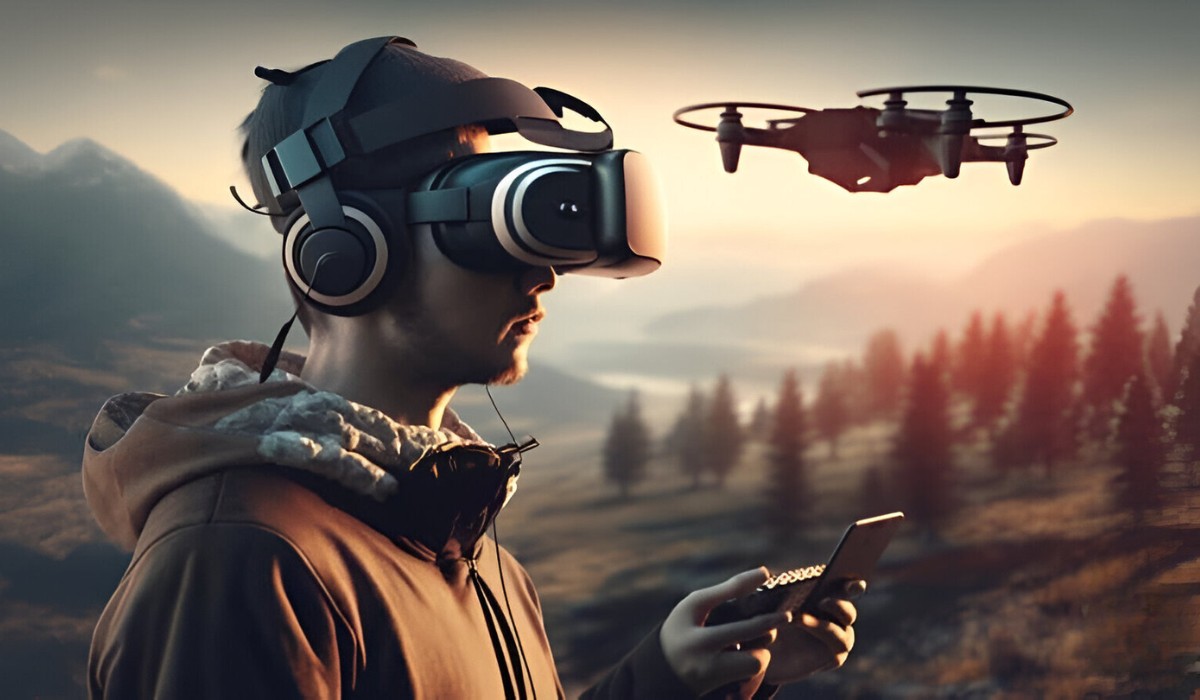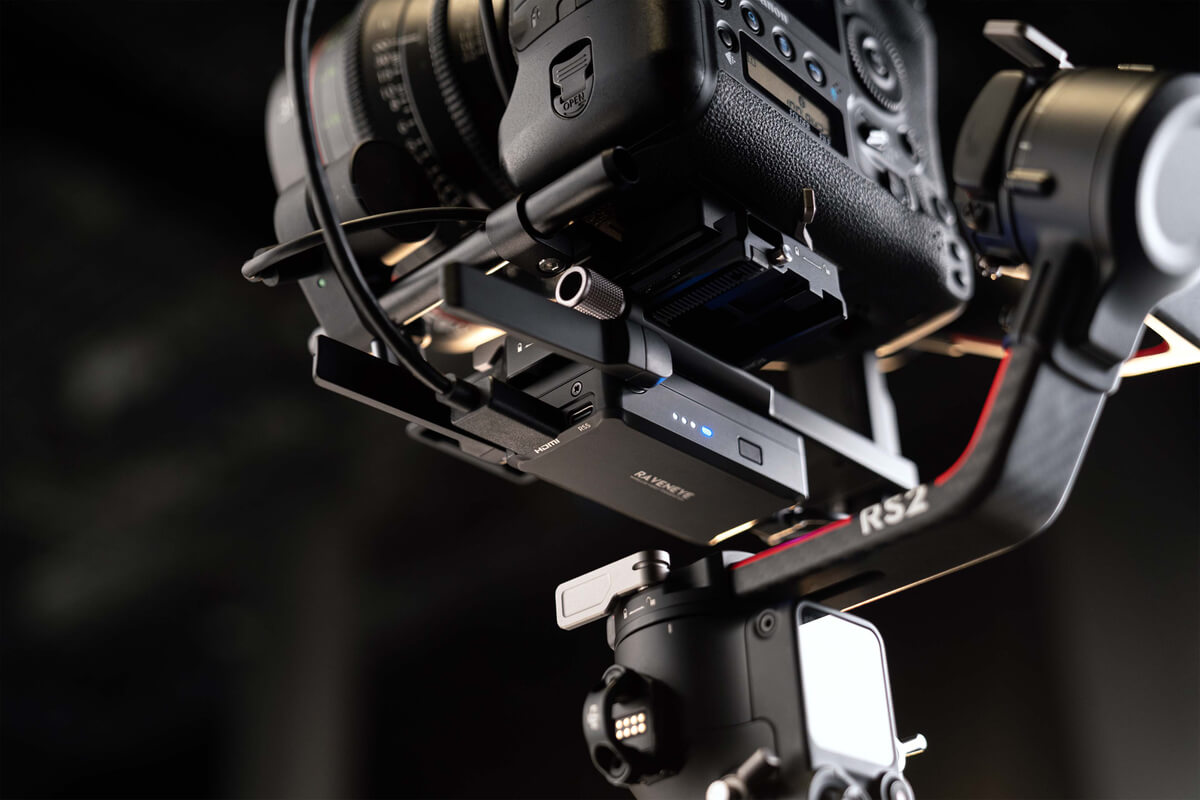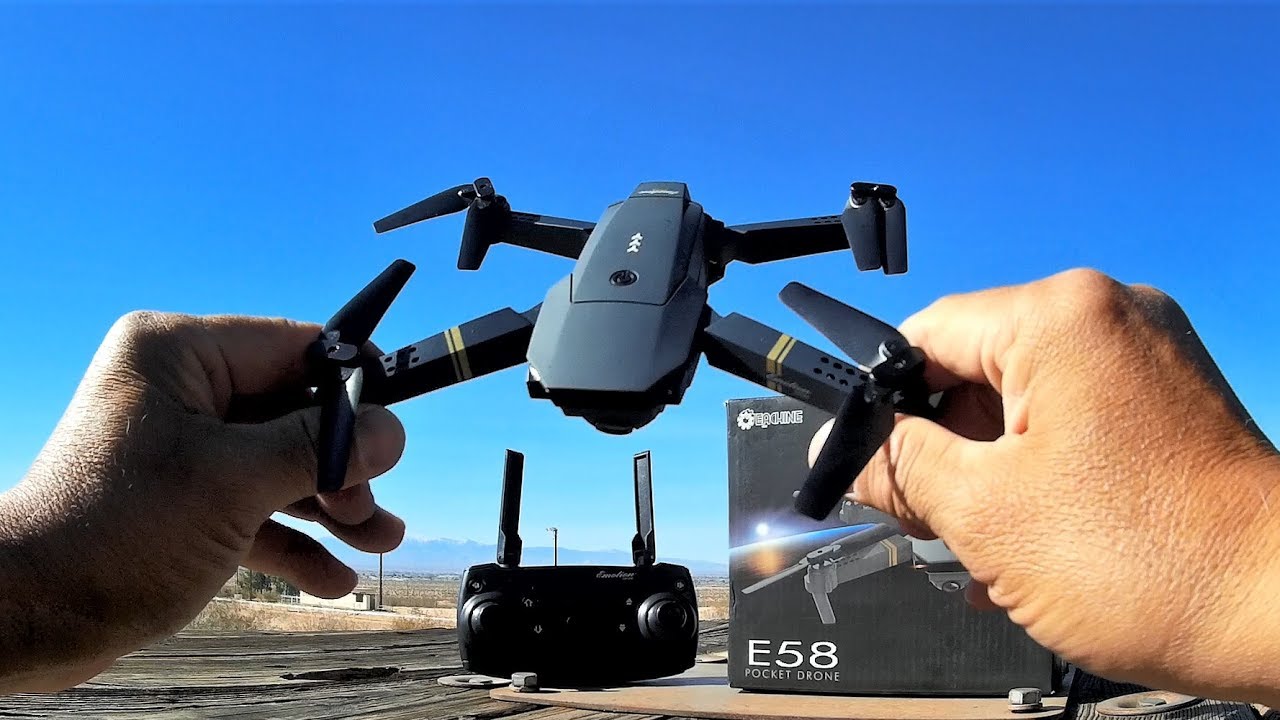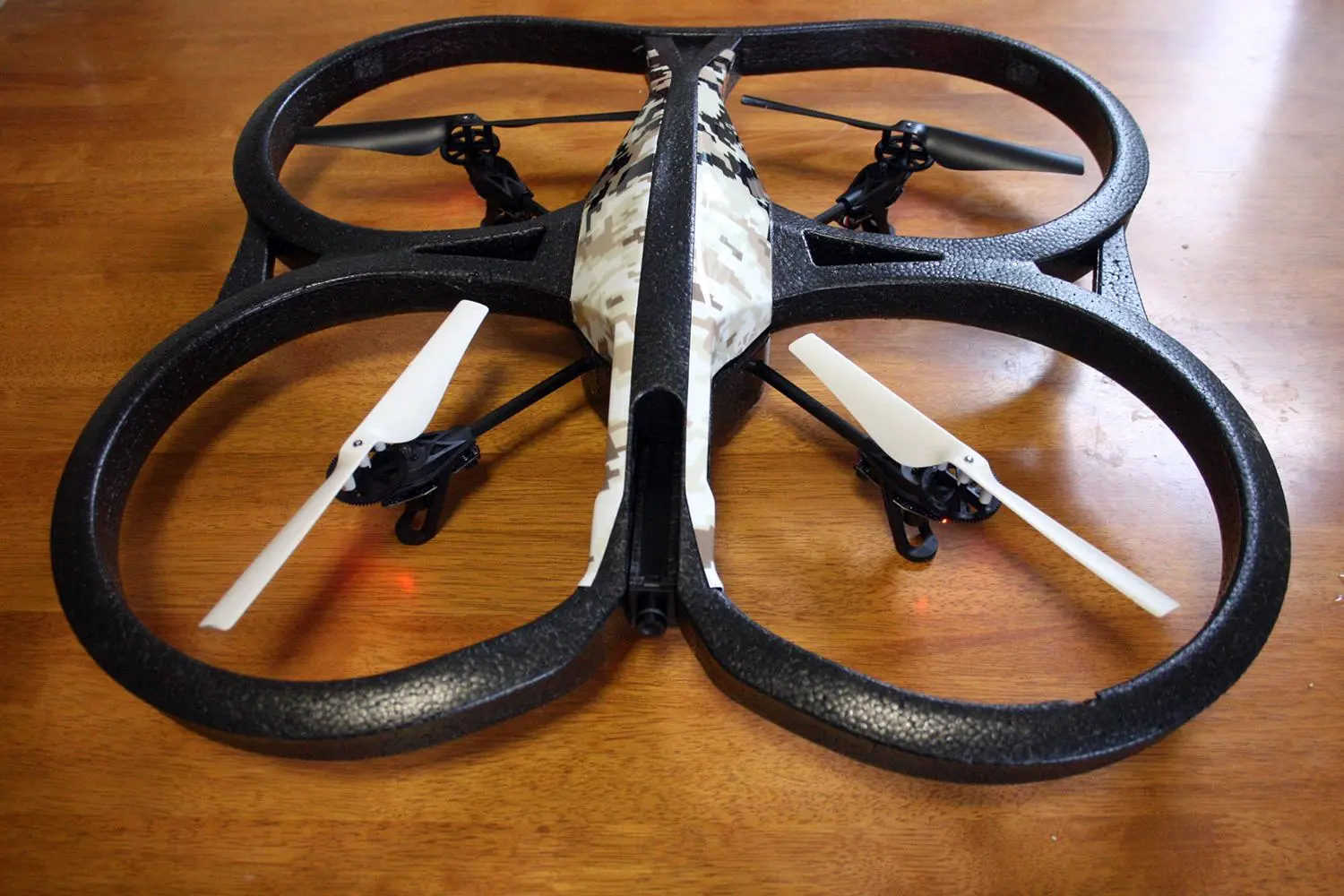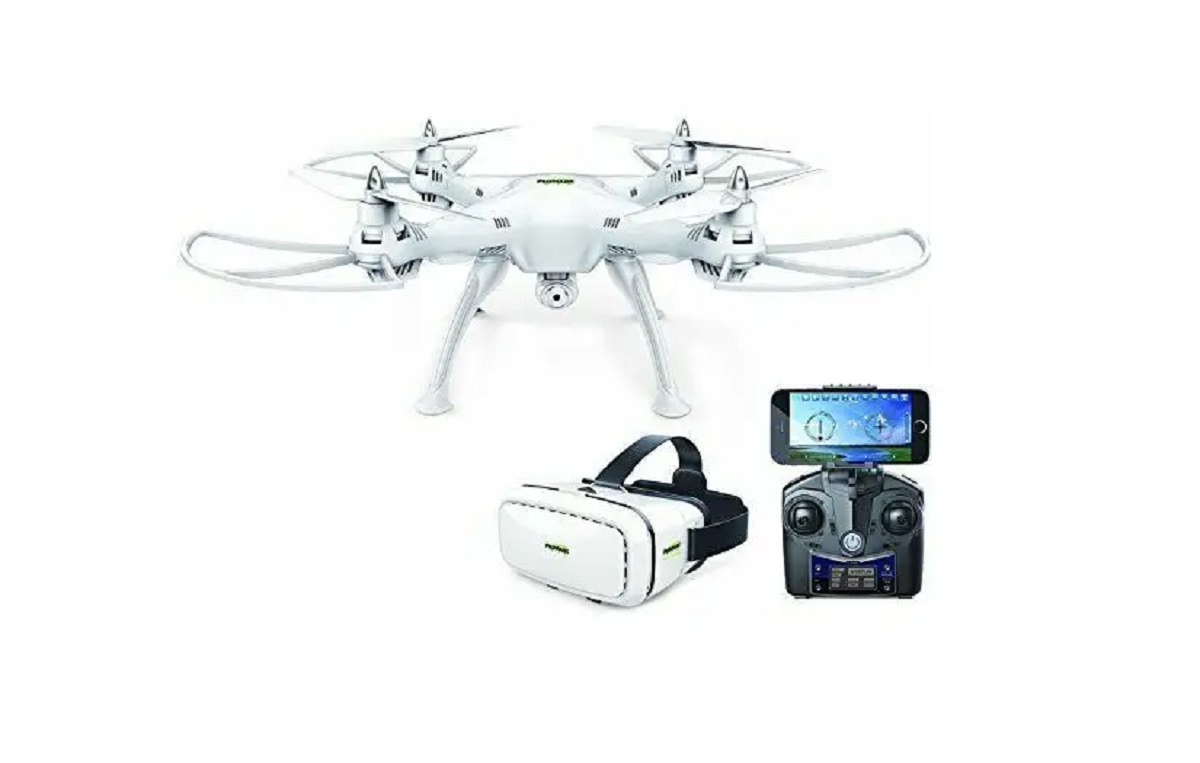The Basics of Drones
Drones, also known as unmanned aerial vehicles (UAVs), have become increasingly popular in recent years. These devices are essentially remote-controlled aircraft that are capable of flight without a human pilot on board. They have revolutionized various industries and are now being used for an array of purposes, from aerial photography and videography to delivery services and even in military operations.
The concept of drones dates back to the early 20th century, but it wasn’t until advancements in technology and the miniaturization of components that they became more accessible and practical. Today, drones come in various shapes, sizes, and capabilities, making them versatile tools in many fields.
So, how do drones work? At their core, drones are equipped with a combination of sensors, cameras, GPS navigation, and flight control systems. These components work together to allow pilots or operators to control the drone remotely. GPS navigation ensures accurate positioning and allows drones to follow pre-programmed flight paths or perform autonomous missions.
There are several types of drones available today, each with its own unique features and functions. Consumer drones are designed for recreational purposes and often come equipped with high-definition cameras for aerial photography or videography. Professional drones, on the other hand, are more advanced and are commonly used in industries such as agriculture, construction, and surveying.
Commercial applications of drones are vast and ever-expanding. They have revolutionized aerial photography and videography by enabling photographers and filmmakers to capture breathtaking footage from unique perspectives. Drones are also being used in delivery services, where they can transport small packages quickly and efficiently.
One of the major benefits of drones is their ability to access hard-to-reach or dangerous areas. They are often used in search and rescue operations, disaster management, and environmental monitoring. Drones can be equipped with thermal imaging cameras, gas sensors, or aerial mapping devices to gather crucial data in remote or hazardous environments.
However, with the rise in drone usage, regulations and legislation have been put in place to ensure safety and privacy. There are strict guidelines on where and when drones can be flown, as well as rules regarding privacy and the protection of airspace.
If you’re considering purchasing a drone, it’s important to familiarize yourself with the regulations in your area and follow best practices for safe operation. Some general safety tips include flying within line of sight, avoiding crowded areas or airports, and respecting the privacy of others.
In summary, drones have revolutionized various industries and have become powerful tools for both recreational and professional use. Whether you’re a photography enthusiast, an agriculturalist, or a search and rescue operator, drones offer an innovative and efficient way to accomplish tasks that were once time-consuming or dangerous.
What Is a Drone?
A drone, also known as an unmanned aerial vehicle (UAV), is an aircraft that operates without a human pilot on board. These versatile devices are equipped with various technologies and sensors that allow them to fly autonomously or be remotely controlled. Drones come in different sizes and designs, each tailored to specific purposes and applications.
The origins of drones can be traced back to the early 20th century, when the first experimental unmanned aircraft was developed. However, it is the recent advancements in technology and the miniaturization of components that have made drones widely accessible and practical for various industries and individuals.
The primary components of a drone include the frame, motors, propellers, flight controller, battery, and sensors. The frame provides the structure and support for the other components, while the motors and propellers generate the necessary thrust for flight. The flight controller, often equipped with a microprocessor, controls the drone’s stability, altitude, and direction of movement.
Drones are equipped with a range of sensors, including GPS (Global Positioning System), gyroscopes, accelerometers, and magnetometers. These sensors enable the drone to determine its position, orientation, and movement in real-time, ensuring precise navigation and flight control.
One of the key features of drones is their ability to be remotely controlled by a human operator. Using a dedicated controller or a smartphone application, the operator can manipulate the drone’s flight path, manipulate its camera, and access the various features and functions of the drone.
Another aspect that sets drones apart is their autonomous capability. Advanced drones are equipped with advanced AI (Artificial Intelligence) technologies that enable them to perform specific tasks or missions without human intervention. This autonomy is achieved through complex algorithms and software that allow the drone to analyze data, make decisions, and adapt to changing environments.
Drones have extensive applications in various industries. Aerial photography and videography have been transformed by drones, offering photographers and filmmakers new angles and perspectives. Drones are also used in agriculture for crop monitoring and spraying pesticides, as well as in construction and infrastructure inspections for surveying and mapping.
Furthermore, drones are utilized in search and rescue operations, environmental monitoring, and disaster management. The ability to access hard-to-reach areas and collect data in real-time makes drones invaluable in emergency situations and in areas where human intervention may be limited or dangerous.
In summary, drones are unmanned aircraft that can operate autonomously or be remotely controlled. With their wide range of applications, they have changed the way various industries approach tasks such as aerial photography, agriculture, and emergency response. As technology continues to evolve, drones will likely become even more versatile and influential in the future.
History of Drones
The history of drones dates back to the early 20th century, with the first experiments in unmanned flight taking place during World War I. However, it wasn’t until the development of modern technology that drones became more practical and accessible for a variety of uses.
During World War I, both the United States and the United Kingdom developed unmanned aerial vehicles for military reconnaissance purposes. The British Royal Flying Corps successfully launched the Ruston Proctor Aerial Target, an unmanned aircraft that resembled a small biplane, in 1916. This marked the first recorded use of a drone as a target aircraft in military training exercises.
Over the following decades, drones continued to be developed primarily for military purposes. During World War II, the U.S. military used drones for target practice and as decoys to distract enemy troops. In the 1950s and 1960s, drones were designed for reconnaissance missions, collecting aerial intelligence and conducting surveillance in areas too dangerous for human pilots.
As technology advanced, drones became more sophisticated and capable. In the 1980s, the Israeli military developed the first armed drones, using them for combat operations. The use of drones for military purposes continued to grow in the following decades, with various countries investing in drone technology and integrating them into their military strategies.
It wasn’t until the early 2000s that drones began to see widespread commercial and civilian use. The development of smaller, more affordable components, such as lightweight cameras and GPS systems, made drones more accessible to the general public.
The rise of drones in the consumer market sparked a new era of aerial photography and videography. Drones equipped with high-definition cameras allowed photographers and filmmakers to capture stunning aerial shots from unique perspectives. Aerial footage that was once expensive and challenging to obtain became more accessible and affordable.
Today, drones are not only used for recreational purposes but also have significant applications in various industries. Agriculture, for example, has benefited from the use of drones for crop monitoring, irrigation management, and precision spraying. Drones equipped with sensors can collect data about soil conditions, plant health, and pest infestations, enabling farmers to make informed decisions and improve productivity.
In recent years, the delivery industry has explored the use of drones as a means of transportation for small packages. Companies such as Amazon and UPS have conducted trials and experiments to assess the feasibility and efficiency of drone delivery services in certain areas.
Despite their widespread use, the history of drones is still being written. Technological advancements continue to push the boundaries of what drones are capable of, opening up opportunities for new applications and advancements. From military use to commercial and recreational purposes, drones have come a long way and are likely to play an even bigger role in our lives in the years to come.
How Do Drones Work?
Drones, or unmanned aerial vehicles (UAVs), consist of various components and technologies that work together to enable their flight and operation. Understanding how drones work can provide insights into their capabilities and the mechanisms behind their flight control.
At their most fundamental level, drones rely on four key components: the frame, motors, propellers, and flight controller. The frame serves as the structure that holds all the other components together. It is typically made of lightweight materials such as carbon fiber or plastic to reduce weight and increase maneuverability.
The motors and propellers are responsible for generating lift and thrust, respectively. Drones can have three or more motors and propellers, with each pair positioned across from one another to maintain balance and stability. As the motors spin the propellers, they create the necessary force for the drone to ascend, descend, and maneuver in different directions.
The flight controller is arguably the most crucial component of a drone. It acts as the “brain” of the UAV, processing data from various sensors and providing control signals to the motors. The flight controller uses data from GPS, gyroscopes, accelerometers, and other sensors to determine the drone’s position, orientation, and movement in real-time.
To control the drone, a human operator uses a dedicated controller or a smartphone application. Through a wireless connection, the operator can send commands to the drone, such as adjusting altitude, changing speed, or maneuvering in different directions. The drone’s flight controller interprets these commands and adjusts the motor speeds and propeller rotations accordingly.
Drones equipped with GPS (Global Positioning System) also have the capability to follow pre-programmed flight paths or perform automated missions. By inputting a series of waypoints or coordinates, the operator can set the drone to fly autonomously, navigating to specific locations without constant manual control.
Sensors play a vital role in drone operation. In addition to GPS, drones often incorporate gyroscopes and accelerometers to measure their orientation and motion. These sensors provide crucial data to the flight controller, allowing it to make adjustments to maintain stability and correct any deviations from the desired flight path.
Cameras and other imaging sensors are increasingly being integrated into drones for aerial photography and videography. High-resolution cameras mounted on gimbals or stabilization systems provide steady footage and allow operators to capture remarkable aerial images and videos.
Advanced drones may also incorporate additional sensors such as lidar (light detection and ranging) or infrared sensors for more specialized applications. For example, lidar sensors can be used for accurate 3D mapping and object detection, while infrared sensors enable thermal imaging for search and rescue operations or temperature monitoring.
In summary, drones work by combining components such as frames, motors, propellers, and flight controllers to achieve flight and control. Their advanced sensors and technologies, including GPS, gyroscopes, accelerometers, and cameras, enable precise navigation, stability, and the ability to capture aerial footage. As technology continues to evolve, drones are becoming more versatile and capable, opening up new possibilities in a range of industries.
Types of Drones
With the increasing popularity and versatility of drones, there is a wide range of types and classifications available. Different drones are designed to serve specific purposes and cater to various industries and applications. Understanding the different types of drones can help you choose the right one for your needs.
1. Consumer Drones: These drones are designed for recreational use and are often more affordable and user-friendly. They are equipped with high-definition cameras for aerial photography and videography. Consumer drones come in various sizes and designs, ranging from compact foldable models to larger and more robust options.
2. Professional Drones: Professional drones are typically more advanced and are used in various industries such as filmmaking, agriculture, construction, and surveying. These drones often have higher payload capacities and longer flight times. They may feature advanced cameras, thermal imaging capabilities, or specific sensors tailored to a particular industry.
3. Racing Drones: Racing drones are designed for high-speed flying and competitive racing events. These drones are built for agility and maneuverability, with a focus on speed and control. Racing drones usually have a streamlined, lightweight frame and powerful motors to maximize performance.
4. Delivery Drones: Delivery drones have gained attention in recent years as companies explore the idea of using them for autonomous package delivery. These drones are designed to transport small to medium-sized packages efficiently and quickly. They often feature long flight ranges and advanced navigation systems.
5. Military and Surveillance Drones: Military drones, also known as unmanned combat aerial vehicles (UCAVs), are used for reconnaissance, surveillance, and combat operations. These drones are often equipped with high-resolution cameras, sensors, and weapons systems. Military drones can range from small, hand-launched models to large, long-range aircraft.
6. Autonomous Drones: Autonomous drones are equipped with advanced artificial intelligence (AI) systems that allow them to operate independently and perform specific tasks without human intervention. These drones use algorithms and machine learning to analyze data, make decisions, and adapt to changing environments. Autonomous drones are commonly used in mapping, surveying, and scientific research.
7. Fixed-Wing Drones: Fixed-wing drones have a design similar to traditional airplanes, with wings that generate lift and allow for longer flight times. These drones are typically used for aerial mapping, crop monitoring, and surveying applications. Fixed-wing drones can cover large areas and fly at higher speeds compared to multirotor drones.
8. Multirotor Drones: Multirotor drones, such as quadcopters or hexacopters, are the most common type of drones seen in consumer and professional markets. They have multiple rotors that provide lift and stability. Multirotor drones are highly maneuverable, capable of hovering in place, and can fly in any direction.
When choosing a drone, consider your specific needs and requirements. Think about the intended use, flight time, camera quality, payload capacity, and overall versatility of the drone. With the wide range of types and options available, there is likely a drone out there that suits your specific needs.
Commercial Applications of Drones
Drones have significantly impacted various industries, opening up new possibilities and revolutionizing the way businesses operate. Their versatility, efficiency, and ability to access hard-to-reach areas have made them invaluable tools in many commercial applications.
1. Aerial Photography and Videography: One of the most widespread uses of drones is in aerial photography and videography. Drones equipped with high-resolution cameras allow photographers and filmmakers to capture stunning aerial shots and footage from unique perspectives. This has transformed industries such as real estate, tourism, and advertising, providing captivating visuals for marketing purposes.
2. Agriculture and Farming: Drones are being increasingly utilized in the agricultural sector for crop monitoring, surveying, and precision farming. Equipped with sensors and cameras, drones can collect data regarding soil health, crop health, and irrigation needs, aiding in decision-making and resource management. They can also be used for spraying pesticides and fertilizers with precision and efficiency, reducing the need for manual labor and improving crop yields.
3. Construction and Infrastructure: Drones are transforming the way construction projects are planned, executed, and monitored. They can capture aerial images and generate high-resolution maps, assisting planners and architects in site analysis and project visualization. Drones are also used to monitor construction progress, inspect infrastructure for damages or weaknesses, and improve safety by reducing the need for human workers in potentially hazardous environments.
4. Surveying and Mapping: Drones have revolutionized the field of surveying and mapping by providing a cost-effective and efficient solution. Equipped with advanced sensors and GPS capabilities, they can quickly and accurately collect data to create 3D digital models, topographic maps, and land survey reports. This is particularly beneficial in remote or inaccessible areas that are challenging to survey using traditional methods.
5. Inspection and Maintenance: Drones have significantly improved the inspection and maintenance processes in industries such as energy, oil and gas, and infrastructure. They can access difficult-to-reach areas, such as tall structures or pipelines, and capture high-resolution images or videos for inspection purposes. Drones equipped with thermal imaging cameras can identify anomalies or defects in electrical systems, buildings, or equipment, allowing for proactive maintenance and repair.
6. Environmental Monitoring and Conservation: Drones are being used in environmental monitoring and conservation efforts to gather valuable data. They can monitor wildlife populations, track migration patterns, and assess ecosystem health without disturbing the natural environment. Drones also aid in monitoring forest fires, assessing the impact of natural disasters, and conducting research on climate change.
7. Delivery Services: Companies like Amazon and UPS have been exploring the use of drones for delivery services. Drones can safely and efficiently transport small packages to remote or hard-to-reach areas, reducing delivery times and costs. While still in the experimental phase, the potential for drone delivery services is immense.
These are just a few examples of the commercial applications of drones. As technology continues to advance, we can expect drones to play an even more significant role in various industries, boosting efficiency, reducing costs, and increasing safety in many business operations.
Benefits and Advantages of Drones
Drones, or unmanned aerial vehicles (UAVs), have become indispensable tools in various industries and offer numerous benefits and advantages. From efficiency and cost savings to enhanced safety and improved data collection, drones have transformed the way businesses operate.
1. Increased Efficiency: Drones can perform tasks faster and more efficiently than traditional methods. They can cover large areas within a shorter period, especially in sectors like agriculture, surveying, and inspection. Drones equipped with advanced imaging technology and sensors can collect data and provide real-time analysis, allowing for quick decision-making and streamlined processes.
2. Cost Savings: Utilizing drones can help businesses cut costs significantly. In sectors like agriculture, drones can aid in optimizing resource management by providing precise data on irrigation and fertilization needs. In construction, drones can monitor projects, detect issues early on, and reduce the need for manual inspections. By automating and streamlining processes, overall operational costs can be reduced.
3. Improved Safety: Drones can be deployed in hazardous or hard-to-reach areas, reducing the risks to human workers. They can perform inspections of tall structures, pipelines, or hazardous environments, eliminating the need for workers to climb or enter potentially dangerous areas. In emergency situations, drones can assess and provide situational awareness, helping first responders make informed decisions without putting themselves in harm’s way.
4. Enhanced Data Collection and Analysis: Drones equipped with advanced sensors and imaging technology can collect large amounts of data quickly and efficiently. With high-resolution cameras, thermal imaging, lidar, or multispectral sensors, drones can provide detailed and accurate information for mapping, monitoring, and surveying purposes. This data can be analyzed and interpreted to derive valuable insights, aiding in decision-making and improving operational efficiency.
5. Versatility and Adaptability: Drones are highly versatile and can be used in various industries and applications. Whether it’s aerial photography, agriculture, construction, or search and rescue, drones can be equipped with the necessary tools and sensors to meet specific needs. They can adapt to different environments, changing conditions, and evolving requirements.
6. Time-Saving: Drones can significantly reduce the time needed to perform a task or collect data. In sectors such as agriculture, large areas can be surveyed quickly, allowing for timely decision-making and targeted interventions. In infrastructure inspections, drones can cover extended stretches in a fraction of the time needed for manual inspections, minimizing disruptions and downtime.
7. Environmental Impact: Drones can help reduce the environmental impact of certain activities. In agriculture, precise application of pesticides and fertilizers can minimize the use of chemicals and decrease water pollution. Drones can monitor and assess the health of forests, wildlife, and ecosystems without directly disturbing them, aiding in conservation efforts and reducing human interference.
These benefits and advantages are driving the widespread adoption of drones across various industries. As drone technology continues to advance, we can expect even more innovative applications and improved capabilities, further enhancing the advantages they offer.
Regulation and Legislation Surrounding Drones
The exponential growth in drone technology has prompted governments around the world to establish regulations and legislation to ensure the safe and responsible operation of drones. These regulations aim to maintain airspace safety, protect privacy rights, and address concerns related to public safety and national security.
1. Registration and Licensing: Many countries require drone owners to register their drones and obtain a license or permit before operating them. This helps authorities track and regulate the usage of drones, ensuring accountability and responsible flying.
2. Restricted Airspace: Governments designate specific airspace as restricted or no-fly zones due to security concerns or the presence of airports, military installations, or sensitive areas. Drone operators must be aware of these restrictions and respect the boundaries to avoid potential accidents or security risks.
3. Height and Distance Limits: Regulations often impose height and distance limits on drone flights to prevent interference with manned aircraft and protect sensitive areas or private properties. These limits vary between countries but typically restrict drones from flying above a certain altitude, beyond line of sight, or near airports and other high-security locations.
4. Remote Identification: Some jurisdictions require drones to have visible identification tags or remote identification capabilities, making it easier for authorities to identify the owner or operator responsible for a particular drone’s flight. This helps hold individuals accountable for any infringements or misuse.
5. Privacy Considerations: Privacy concerns surrounding drones have prompted regulations to safeguard individuals from intrusive or unauthorized surveillance. Laws may restrict drones from flying over private properties without consent or capturing images or videos of individuals without their permission.
6. Pilot Certification and Training: To ensure the safe operation of drones, regulations may require drone pilots to undergo training and obtain certification. Training programs cover topics such as flight procedures, regulations, safety guidelines, and emergency protocols.
7. Commercial Operations: Regulations often differentiate between recreational and commercial drone operations. Commercial operators may need to adhere to additional requirements, such as obtaining permits, insurance, or additional licensing, to ensure safety and compliance in their professional activities.
8. Anti-Collision Systems and Technology: Some countries are working on implementing regulations that mandate the use of anti-collision technology on drones. This includes features like geo-fencing to prevent drones from flying in restricted areas and collision avoidance systems to minimize the risk of accidents.
It is important for drone operators to stay updated on the regulations and legislation in their respective countries or regions. Compliance with these regulations not only ensures safety but also minimizes the risk of legal consequences and penalties.
The regulations surrounding drones are continually evolving as technology progresses and new challenges emerge. Governments and aviation authorities are actively collaborating with drone manufacturers and industry stakeholders to strike a balance between enabling drone advancements and ensuring public safety.
Drone Safety Tips and Best Practices
Operating a drone safely is crucial to avoid accidents, protect others’ privacy, and abide by regulations. Whether you’re a recreational pilot or a professional drone operator, following these safety tips and best practices is paramount.
1. Learn and Follow Regulations: Familiarize yourself with the local regulations governing drone operation. This includes understanding restrictions on flight altitude, airspace limitations, and any registration or licensing requirements.
2. Pre-flight Checks: Before each flight, conduct a thorough pre-flight check of your drone. Inspect the propellers, motors, and other components for any damage or defects. Ensure that the battery is charged, the controller is functioning correctly, and the GPS signal is strong.
3. Fly in Open Areas: Choose open areas away from densely populated areas, airports, and restricted airspace to minimize the risk of accidents. This allows for better visibility and reduces the chances of collisions with buildings, trees, or other objects.
4. Maintain Line of Sight: Always keep your drone in your line of sight during the flight. Losing sight of the drone can lead to accidents or breaches of regulations. Flying beyond visual line of sight (BVLOS) may require special permissions or licensing.
5. Respect Privacy: Be mindful of other people’s privacy when flying your drone. Avoid flying over private property without permission and avoid capturing images or videos of individuals without consent. Respect the privacy of others and operate the drone responsibly.
6. Be Aware of Weather Conditions: Check the weather conditions before flying. Avoid flying in strong winds, rain, or fog as they can affect the stability and control of the drone. Be cautious of sudden weather changes that could compromise the safety of the flight.
7. Maintain Battery Safety: Follow manufacturer guidelines for handling and charging the drone’s batteries. Avoid overcharging or exposing the batteries to extreme temperatures. Inspect the batteries regularly for any signs of damage or swelling and replace them if necessary.
8. Use Return-to-Home (RTH) Function with Caution: The Return-to-Home function is helpful in case of emergencies or signal loss. However, ensure that the home point is accurately set and there are no obstacles in the drone’s path before initiating the RTH function.
9. Stay Updated with Firmware and Software: Regularly update the firmware and software of your drone and controller to ensure optimal performance and access to the latest safety features and improvements.
10. Continuous Learning and Training: Stay informed about the latest drone advancements, regulations, and best practices through continuous learning and training. Attend workshops, webinars, and community events to enhance your skills and stay updated with the industry.
By following these safety tips and best practices, you can enjoy flying your drone responsibly while ensuring the safety of others and respecting privacy. Remember, safety should always be your top priority when operating a drone.
Frequently Asked Questions about Drones
As drones continue to grow in popularity, it’s natural to have questions about their capabilities, regulations, and usage. Here are answers to some of the most frequently asked questions about drones:
1. Are drones legal to fly?
Yes, drones are legal to fly in many countries. However, regulations differ from place to place, and it’s essential to familiarize yourself with the specific rules and requirements in your region or country.
2. Do I need a license to fly a drone?
Many countries require registration and licensing for drone operators, especially for commercial operations. Recreational pilots may have less stringent requirements, but it’s essential to check your local regulations to know if you need a license.
3. Can I fly my drone anywhere?
No, there are restrictions on where you can fly your drone. Drone flights are prohibited in certain areas, such as airports, military installations, and other designated no-fly zones. Additionally, local regulations may impose altitude limits and restrictions on flying over crowds or private property.
4. Do I need insurance for my drone?
Insurance requirements vary depending on where and how you plan to fly your drone. In some cases, commercial drone operators may be required to have liability insurance. Even for recreational use, it’s a good practice to consider insurance coverage to protect against any damages or accidents.
5. How far can drones fly?
The flight range of drones depends on various factors, including their design, battery capacity, and radio signal range. Most consumer drones have a maximum range of a few kilometers, while more professional-grade drones can have longer ranges.
6. What is the maximum altitude drones can fly?
The maximum altitude that drones can legally fly varies between countries. In many jurisdictions, recreational drones are limited to a maximum altitude of around 120 meters (400 feet) above ground level. However, for commercial operators or when special permits are obtained, higher altitudes may be allowed.
7. Can I fly my drone at night?
Flying drones at night is usually subject to specific regulations and may require special permits. Due to reduced visibility and potential safety concerns, some regions restrict or impose additional requirements, such as the use of anti-collision lights, for nighttime drone flights.
8. Are there any privacy concerns with drones?
Privacy concerns related to drones exist, especially regarding aerial photography and videography. It’s important to respect the privacy of others and comply with local laws regarding capturing images or videos of individuals or private property without consent.
9. How long can drones fly on a single charge?
The flight time of a drone depends on several factors, including the drone model, battery capacity, payload, and flight conditions. Consumer drones typically have flight times ranging from 10 to 30 minutes per charge, while professional-grade drones may have longer flight times or the option for quick battery swaps.
10. Can I fly my drone in bad weather?
Flying drones in bad weather, such as strong winds, rain, or fog, can pose risks to the drone’s stability and control. It’s generally recommended to avoid flying in adverse weather conditions to prevent accidents and ensure safe operation.
Remember to review and adhere to the specific regulations and guidelines in your country or region to ensure responsible and safe drone operation. Stay informed about any updates or changes to the rules to fly your drone legally and with peace of mind.







